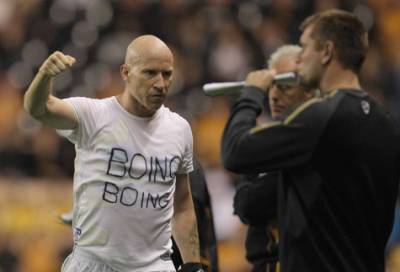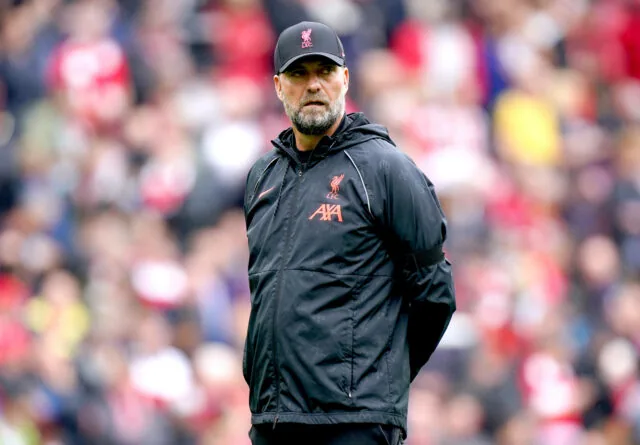There was once a golden period in football’s pastoral, whimsical and sepia-hued history when many-a-self-respecting chap under the age of 50 would, cometh matchday, slip into his faithful dog-eared pair of Reebok training brogues, pull on his favourite Aquascutum overcoat and then whistle a jaunty, meandering tune as he slid something hefty up the sleeve with the express aim of mashing in someone’s cranium with it later.
Throughout the 1970’s and 80’s, Britain led the way in terms of football hooliganism.
For example, UK firms were the first to throw darts over partitions and into the heads of innocent spectators, it was the Millwall Bushwhackers that we have to thank for the ‘Millwall Brick’ (a newspaper rolled so tightly it can be used as a weapon) and, of course, British hooligans were amongst the first to pioneer the art of actually killing their fellow supporters by drunkenly rushing into stadiums without a ticket – thus squeezing the life out of the fortunate few by mincing them through the terraces like chuck steak through a meat grinder.
It truly was a heady old time for everyone involved, but sadly it was all fairly short-lived. Prime Minister Maggie Thatcher went a ruined everybody’s fun in 1989 (in the few months following the Hillsborough Disaster), by passing the Football Spectators Act in Parliament and that, give or take a few more isolated incidents and resultant amendments to the law, was the end of that.
The English contingent tried in vain to keep their sainted movement alive by throwing chairs at the Irish or by tearing apart picturesque German suburbs but the once-proud scene was in it’s death knells and, since the World Cup in 2002, hooliganism has dwindled into a very selective and niche affair – with high-profile incidents all but ceasing entirely.
Which is all complete and utter bollocks. Thanks for listening.

Only last month, fans (in the loosest possible sense) of Wolverhampton Wanderers caved in the cheekbone of a 78-year-old lady after hurling a chunk of breezeblock after through the window of a Notts County supporters’ coach following an ‘incendiary’ gesture by County striker Lee Hughes that riled them to the point of destruction. The gesture? A t-shirt with the words ‘Boing’ and ‘Boing’ scrawled across it in the hand-writing of imbecile.
As usual, the assault was greeted with the same old ‘return to the bad old days?’ drivel that usual accompanies any widely-reported fracas but the incident outside Molineux is by no means isolated, and the notion of hooliganism being a cyclical affair is naive at the very least.
Trouble routinely breaks out at even the most outwardly placid of fixtures, as the footballing history or the geographical proximity of the two clubs is hardly ever the nub of the problem.
It can be hardly construed as coincidence that, without exception, every single individual involved in every single instance of footballing hooliganism on the entire timeline of human evolution has been a rudderless moron and, coupled with the fact that they are a persistent, hardy breed that show no signs of stemming it’s reproduction rate any time soon, should really be ringing alarm bells that the continuing fight against this kind of twattery is far from over.

A study released by the BBC today indicates that incidents of football hooliganism involving young people have almost trebled in the past three years.
The report concludes that the official Association of Chief Police Officers (ACPO) statistics show there are now 290 teenagers across the UK banned from football grounds, and that internal police figures show singular incidents of football disorder involving young people have increased from 38 in 2007 to 103 last season.
The figures also show that almost half (47%) of incidents last season in England, Wales and Northern Ireland involved youths with the tagline of the dossier reading that, ‘while the violence is not at the levels of the 1970s and ’80s, ACPO are witnessing disturbing evidence of younger fans becoming involved’.
Andy Holt, a spokesman for ACPO, said:
“If they’re engaging in football-related disorder at an earlier age then we’re going to be stuck with that sort of behaviour potentially for some while. So it is something that we are acutely aware of.
People are coming through and engaging in football disorder who perhaps weren’t around in the heyday of football violence 15-20 years ago, so it is a worrying trend that the younger element are starting to pick up on this sort of behaviour.”
Football banning orders are the key tool that the authorities favour in trying to tackle the problem. The bans apply to all football grounds, and can also stop troublemakers from using trains or entering city centres on match days – but only for four hours before the game and six hours after it.
You’ve got to ask yourself, would a dedicated young troublemaker – who’s affiliation to the game of football is tenuous at best – really be concerned by such pifflingly mild restrictions?
An entirely new wave of fresh, aspirant greenhorns are already busy earning their hoodlum spurs and, with the measures being taken to combat them being weak to the point of inconsequential coupled with cuts in the funding for matchday policing (for example, one proposal is to remove policing from train stations in order to cut spending) likely to be enforced across the board sooner rather than later, it would seem that the planets are now aligning for all our fledgling thugs.
A return to the dark days indeed.
Add Sportslens to your Google News Feed!






